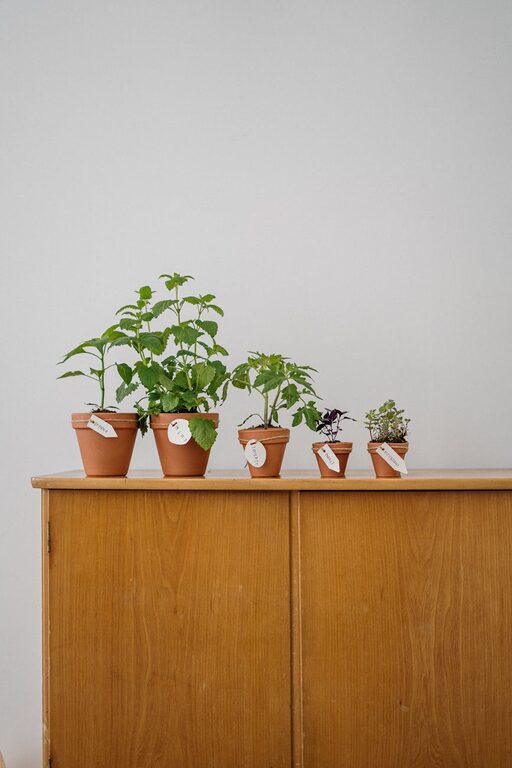How to Start a Small Herb Garden Indoors: A Simple Guide

Growing herbs indoors is a rewarding and practical way to enjoy fresh, aromatic flavors in your cooking all year long. Whether you have a large kitchen or just a sunny windowsill, starting a small herb garden inside can be fun and straightforward. With a little planning and care, you can cultivate a variety of herbs that brighten your meals and your space.
In this guide, we’ll walk you through everything you need to know to get your indoor herb garden up and thriving.
Why Grow Herbs Indoors?
Indoor herb gardens allow you to have fresh herbs at your fingertips regardless of the season. They also add a touch of greenery and can improve air quality in your home. Plus, growing herbs yourself saves money compared to buying fresh herbs from the grocery store, which can wilt quickly and cost more over time.
Choosing the Right Herbs
Not all herbs grow equally well indoors, so selecting the right varieties is key to success.
Popular beginner-friendly herbs for indoors include:
– Basil
– Parsley
– Chives
– Mint
– Thyme
– Rosemary
– Oregano
– Cilantro (though a bit trickier)
When selecting herbs, think about your cooking preferences and which herbs you use most often. Starting with 2 to 4 different kinds is manageable and allows you to learn about each plant’s care.
What You’ll Need to Get Started
Before planting, gather the following supplies:
– Containers: Pots with drainage holes to avoid waterlogging.
– Potting soil: A lightweight, well-draining potting mix designed for indoor plants.
– Herb seeds or starter plants: Starter plants are easier for beginners, but seeds offer a wider variety.
– A sunny spot: Most herbs require 6-8 hours of sunlight daily. A south-facing window is ideal.
– Watering tools: A small watering can or spray bottle.
– Optional: Grow lights for low-light spaces.
Steps to Plant Your Indoor Herb Garden
1. Prepare Your Containers
Choose pots that suit your space. Containers should be at least 4-6 inches deep for most herbs. Fill each pot with fresh potting soil, leaving about an inch of space at the top.
2. Plant Your Herbs
If using seeds, follow the instructions on the packet—usually planting them about twice as deep as their size. If using seedlings, dig a small hole and gently transplant the plant into the soil. Press soil gently around the roots.
3. Place Your Garden in Sunlight
Position your herbs in a bright spot. Natural sunlight is best, but if your space is dim, consider a grow light to supplement.
4. Water Properly
Herbs like moist but well-drained soil. Water when the top inch of soil feels dry. Avoid overwatering, which can cause root rot. Use a watering can or spray bottle to dampen the soil evenly.
Caring for Your Indoor Herb Garden
Pruning and Harvesting
Regular trimming encourages bushier growth. Snip leaves and stems with clean scissors, taking no more than one-third of the plant at a time. Harvest herbs in the morning for the best flavor.
Fertilizing
Feed your herbs with a balanced, water-soluble fertilizer every 4-6 weeks to keep them healthy. Follow package directions to avoid overfeeding.
Managing Pests
Indoor herbs can attract pests like aphids or spider mites. If you notice any, gently wash leaves with mild soap and water or use natural insecticidal sprays.
Tips for Success
– Rotate your pots weekly to ensure even sunlight exposure.
– Use labeled markers to identify your herbs.
– Avoid placing plants near drafts, heating vents, or air conditioners, which can stress them.
– Keep the humidity levels moderate – misting occasionally may help in very dry homes.
Troubleshooting Common Issues
– Yellowing leaves: Often a sign of too much water or poor drainage.
– Leggy plants: Indicates insufficient light; add grow lights or find a sunnier spot.
– Slow growth: Could result from nutrient deficiency or low temperatures; try fertilizing and keeping herbs in a warmer area.
Enjoying Your Indoor Herb Garden
Once established, your indoor herb garden can be a living kitchen companion. Fresh herbs enhance dishes, teas, and even homemade beauty products. Plus, tending to your plants can be a calming daily ritual.
With patience and consistent care, your small indoor herb garden will flourish. It’s a simple way to bring nature indoors and boost your cooking with homegrown flavor.
Happy gardening!
